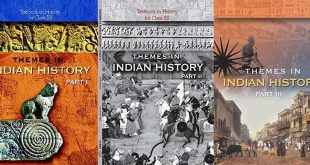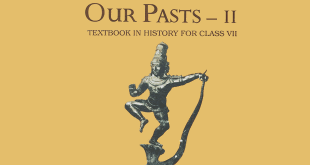Question: Discuss the things to become a resource.
Answer: Any material cannot be called a resource till it satisfy the following conditions:
- It should be possible to use the conserved material.
- It can be transformed into more useful and valuable goods.
- There should be sufficient development of science and technology for the exploitation of the resources.
- Enough capital should be made available to acquire technology.
Question: All biotic resources are not renewable. Discuss the statement.
Answer: Biosphere is the source of all biotic resources. The biotic resource includes forests, agriculture, crops, wildlife and animals. Coal and petroleum also come under biotic resources because they have originated from organic matter which was buried in the earth’s interior millions of years ago. Forests, fish, crops, etc. are renewable resources. They are exhaustible on a large scale. It takes a long time for renewal of these resources.
Question: Explain the terms resource conservation and sustainable development.
Answer: Resource conservation is the concept of using resources carefully so that they do not end up quickly. The future generations also need the resources, but if we keep using them at a fast pace, they may end up, thus posing problems for the future. We should use resources in such a balanced way that we satisfy our needs as well as conserve them for future. This concept is called sustainable development.
Resources 8th Class – Question: Why are human beings resources?
Answer: Human beings are intelligent living beings. They can use their intelligence to realise the utility of substances. Had there been no humans, the resources would not have been resources. Human beings are interdependent on each other, and they prove useful to each other. For example, a postman renders us an important service, so he is a resource.
Question: Explain how resources are classified broadly.
Answer: Resources are broadly classified into natural, human-made and human. Natural resources are those that are taken from nature. They are used without modifying them, i.e. in the same form as they exist in. Rivers, lakes, air, soils, minerals, trees, mountains, etc. are natural resources. Human-made resources have not been provided to us by nature. Human beings have used their intelligence to manufacture them for their own use. Examples include vehicles, buildings, roads, telephone, etc.
Human resources include people who serve us in any way. A teacher, doctor, carpenter, cobbler, etc. are human resources.
Question: Write a short note on the significance of time and technology in making a substance a resource.
Answer: Time and technology are important factors in making substances resources. With time, technology develops. As technology develops, we begin to discover new ways to make life better. In this process, certain substances which were useless to us earlier become useful. An invention and discovery gives us new resources. An example is hydroelectricity. This technology has made water a source of electricity.
Question: As human beings, how can we ensure sustainable development?
Answer: Since we live on the earth, it is our duty to practice sustainable development. We can do this by ensuring that:
- The usage of renewable resources is sustainable.
- The diversity of life on earth is maintained.
- The damage caused to nature by our activities is as Tow as possible.
Resources 8th Class – Question: Distinguish between the following:
Answer:
1. Natural and human-made resource:
Natural:
- Eco-friendly
- Land, air, water, soil, minerals, natural vegetation and fossil fuels are known as natural resources.
- Natural resources have many classifications.
- Gift of nature.
Human-made:
- Not Eco-friendly
- Buildings, roads, machinery vehicles are known as Human-made resources.
- Human made resources don’t have classifications.
- Made by Humans.
2. Biotic and Abiotic resources:
Biotic:
- Biotic resources are also called living resources.
- For e.g.: Forest, agricultural crops, wild and domestic animals.
- They can reproduce.
Abiotic:
- Abiotic resources are also called non-living environment.
- For e.g.: Air, water, minerals, land, power resource.
- They cannot reproduce.
3. Potential and Development resource:
Potential:
- The resources whose total available quantity is not known at present are called potential resources.
- These resources are not used at present, but can be used in the future.
- Surveys to be conducted.
- For e.g.: Africa has great potential for the generation of hydroelectricity.
Development:
- Those resources whose total quantity and quality are at present known are called actual or developed resources.
- Used in present
- Surveys had been conducted to find out their total available reserve.
- The windmills, such as in the Netherlands and Tamil Nadu, now generate electricity.
4. Non-renewable and Renewable resources:
Renewable:
- The resources which can be renewed by reproduction are called renewable resources.
- These are called inexhaustible resources.
- The biotic resources are also renewable.
Non-renewable:
- The resources which are available in fixed quantities, like minerals and fossil duels, are called non-renewable.
- These are called exhaustible resources.
- These resources once exhausted cannot be replaced.
 Class Notes NCERT Solutions for CBSE Students
Class Notes NCERT Solutions for CBSE Students




